From Mouse Movement Emulation to Mobile Automation
Mouse movement emulation, which involves making your cursor move like a real person’s, has long been a key way to stay hidden during browser automation. By creating curved paths, adding random delays, and varying click patterns, scripts avoid triggering anti-bot systems that look for stiff, robotic actions. The main idea is simple: behave like a human, not a robot.
On mobile devices, where touchscreens replace mouse, the challenge is different. Swipes, taps, and scrolls need to imitate the small imperfections of real users—hesitations, speed fluctuations, and unpredictable gestures. Anti-fraud systems watch these behaviors closely, flagging overly repetitive taps or uniform scrolling. Whether automating a browser or a mobile app, success depends on making your actions look natural and human.
GeeLark’s automation helps solve this problem by using techniques similar to mouse movement emulation, but for mobile apps. This makes automation look more natural and like real user behavior.
Why Mouse Movement Emulation Still Matters
Mouse movement emulation remains a vital component of automation, especially by mimicking human-like behaviors through techniques such as randomized paths, non-linear trajectories, and variable delays. These strategies help scripts avoid detection by anti-bot systems that analyze movement patterns, hesitations, and interaction consistency. Mainstream methods currently include:
- Using Selenium’s Actions class to perform basic mouse movements, clicks, and drag-and-drop actions.
- Incorporating random offsets and curved trajectories to make movements less predictable.
- Applying interpolation algorithms to generate smooth, human-like motion paths.
- Adding pauses and jitter to simulate natural hesitation and micro-movements.
- Combining with proxy rotation and headless browser configurations to mask automation signatures.
However, since mobile apps are not controlled via mouse, what are the new challenges in automating interactions on mobile devices?
New Challenges in Mobile Automation
Touch-Based Interactions
When automating a website on a computer, you mainly move a mouse and press keys. But on a phone or tablet, you need to simulate touches, such as tapping, swiping, pressing and holding, or pinching to zoom. These gestures are more natural but also trickier to do artificially.
Be aware that mobile automation has to copy some kinds of gestures, not just clicks like on a computer.
Finding UI Elements
On a web page, you can find buttons or links using simple tools like CSS selectors or XPath. On mobile apps, elements are nested deeply inside many layers, and their attributes can be different or less clear. You need to use special properties like class names, resource IDs, or content descriptions.
Make sure your tools can handle this complex hierarchies, or you might miss the right buttons or controls.
Devices and Environments
Different smartphones with different device information and system versions. When automating tasks for multiple accounts on different devices, it’s very important to keep those accounts separate and isolated. If accounts use the same environment or login to on same device, platforms can easily link them together and might ban those accounts.
To prevent this, you might need to use different devices, virtual environments, or change device fingerprints to make each account look like it’s on a different phone.
Warning: Failing to keep accounts and environments separated can lead to platform detection and account bans. Always make sure each account runs in a different environment to stay safe.
Learning to Write Script for Mobile
Writing scripts for mobile phones isn’t as easy as it sounds. First, you need to learn how to code. For example, if you want to use JavaScript, it can take at least a month just to learn the basics. And even after learning, writing a simple script that works on a phone can take extra time. Honestly, for just a simple task, the amount of time you spend learning and creating the script might be more than what it’s worth — that’s called a low “return on investment.”
Second, scripting for phones is different from scripting for browsers. You need to learn new ways of controlling the phone, which are not common in browser automation. This adds extra difficulty because you have to master new techniques that are not used in regular website scripts.
Tip: If you’re thinking about writing your own mobile scripts, weigh whether it’s worth the time and effort. For most people, using ready-made tools or solutions is faster and more effective than building everything from scratch.
Human-Like Mobile Automation
Although GeeLark RPA doesn’t rely on physical mouse movement, it simulates touchscreen actions like tapping, swiping, long pressing, and gestures. It also uses logical decisions and IF condition actions to make the automation look more like human behavior.
Below the image, you’ll see how GeeLark RPA mimics a real user by scrolling through the screen and liking posts:

Variety of Interactive Actions
GeeLark RPA supports many complex actions, such as opening app, scrolling through pages, long-pressing elements, entering text, and waiting for screens to respond. It can also introduce random delays to mimic the small variations in human actions. These features help make the automation more natural and human-like, greatly enhancing the realism of the scripts.
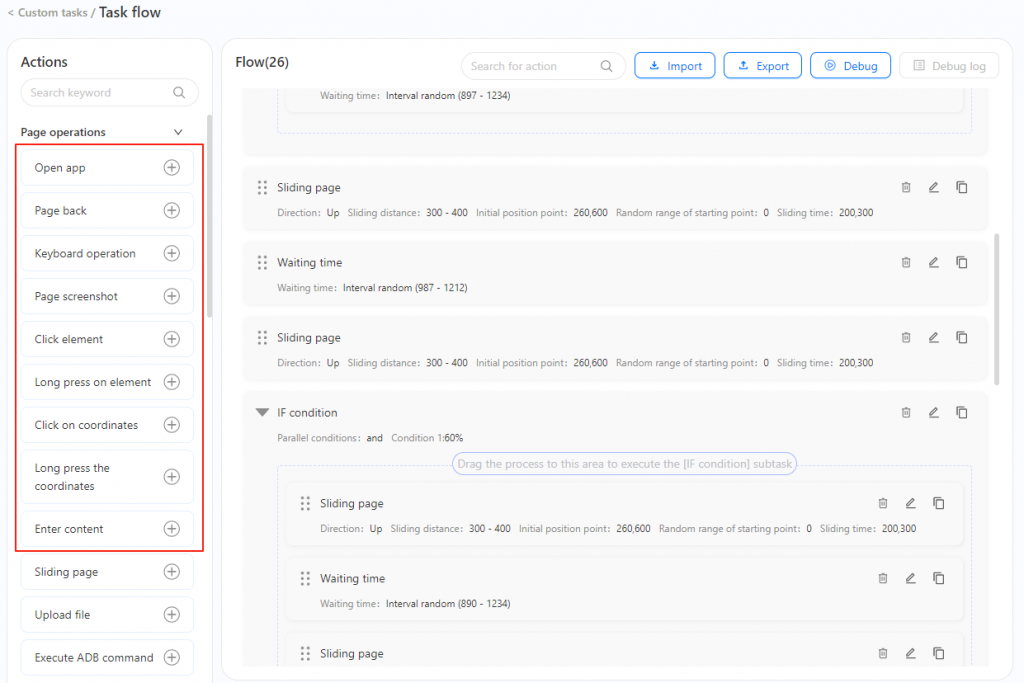
Make automation more like human operations:



Find Elements Easily
When finding interface elements, GeeLark RPA offers two methods:
Element attribute-based: This uses resource fullIDs, class names, descriptions or texts to locate controls. Even in complex UI structures, it can identify elements accurately.
Coordinate-based: This involves directly specifying the screen position. It’s useful for elements that are hard to find using attributes, ensuring clicks and swipes are precise.
You can learn more about how to locate elements in the GeeLark RPA learning manual, which is very beginner-friendly.
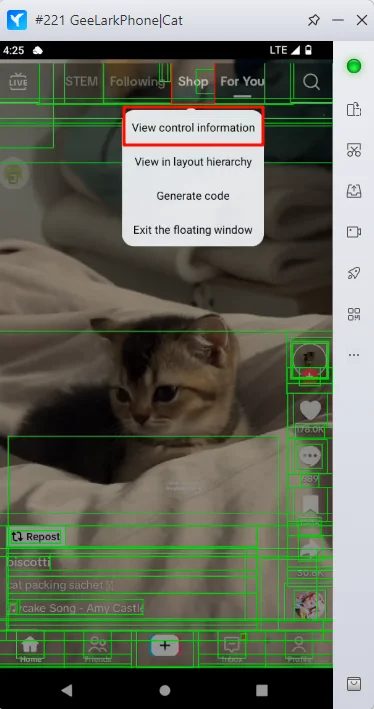
Managing Multiple Accounts
One of the biggest advantages of GeeLark is that it allows you to manage multiple accounts at a very low cost. Its cloud phones are essentially real Android devices hosted in the cloud. Each cloud phone has its own unique IMEI, MAC address, brand, and model. You can also set different proxies for each device to keep your accounts separate and prevent cross-account detection.
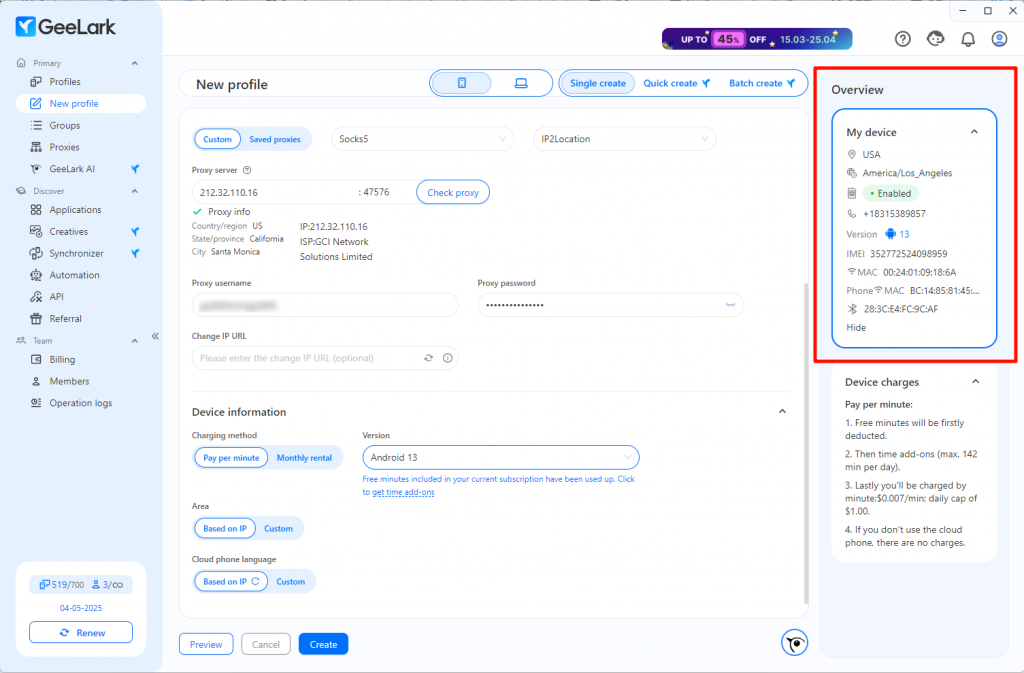
By customizing device settings and fingerprints, you can keep each account isolated and reduce the risk of platform detection or bans.
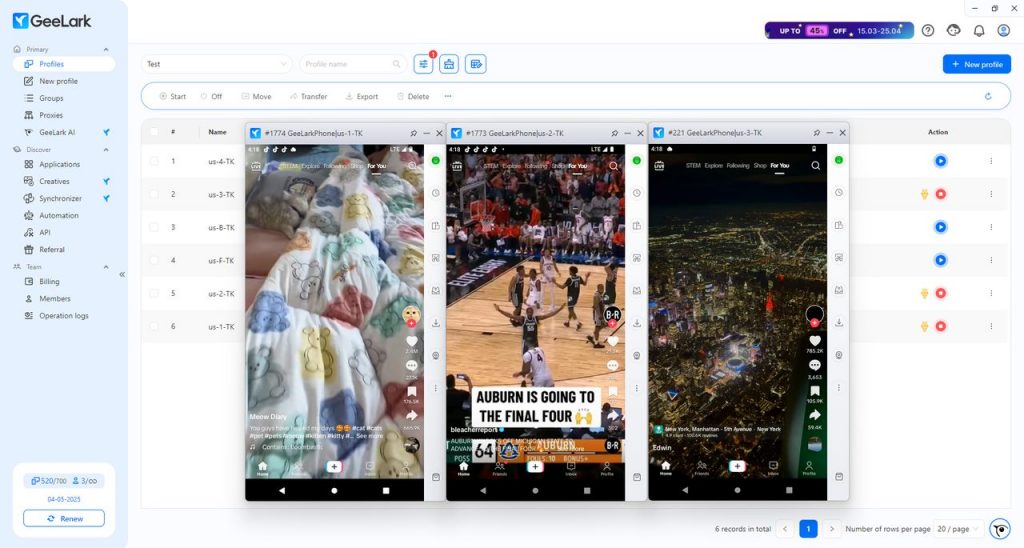
Moreover, GeeLark provides antidetect browser that supports both browser automation and mobile automation. Whether you need to handle multiple accounts or automate workflows, GeeLark provides a comprehensive, all-in-one solution.
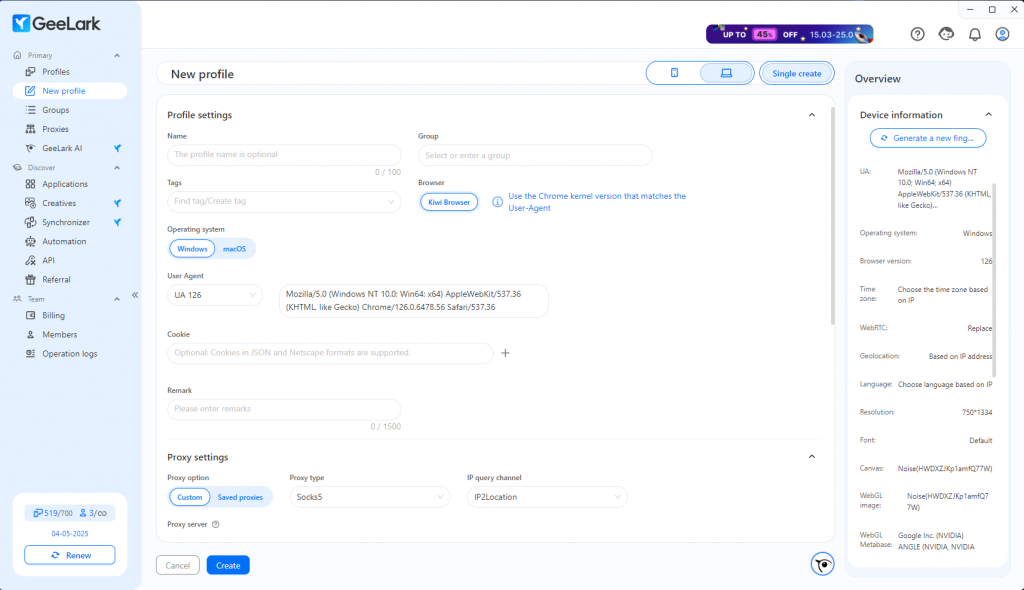
Easy to Learn and Cost-Effective
Most users find learning GeeLark RPA to be very easy thanks to its user-friendly interface and simple operation. Instead of complex programming languages, you can custom automation scripts using its visual, drag-and-drop tools—no coding required. This makes it faster to get started and offers an excellent return on investment. With just a small amount of time to learn the basics, most users can easily handle complex mobile automation tasks.
If you dedicate about a couple of days or less to learning, you’ll be able to master the core features. And if you already have scripting experience, you’ll pick it up even faster.
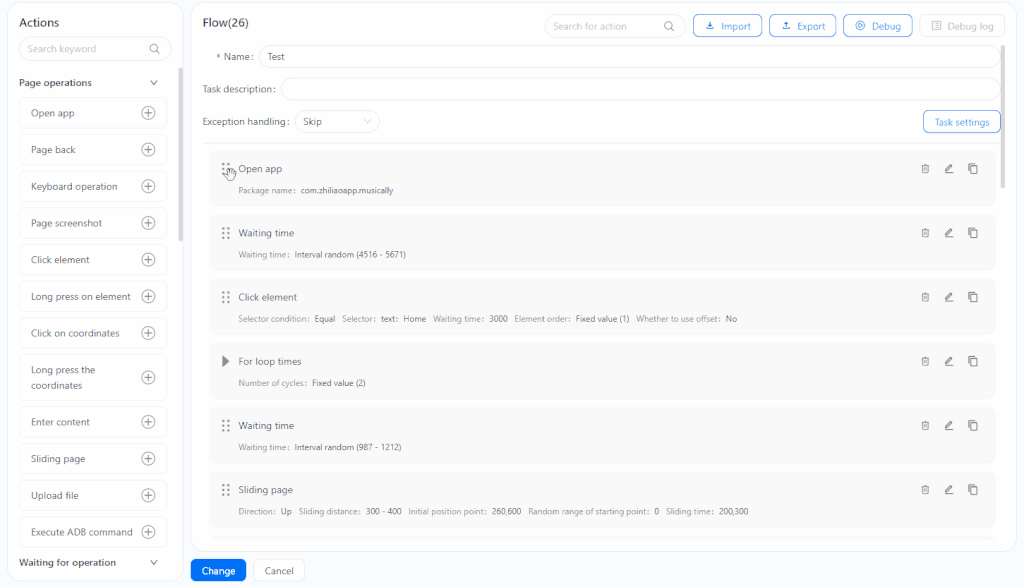
See Also: GeeLark RPA Guide for Beginners
No time to learn?
That’s okay! If your work involves social media platforms like TikTok, YouTube, or Instagram, you can simply browse the templates in the “Marketplace”. Just pick the cloud phone you want to use and set the time for your tasks to run. It’s a quick and easy way to get started with automation without any hassle.
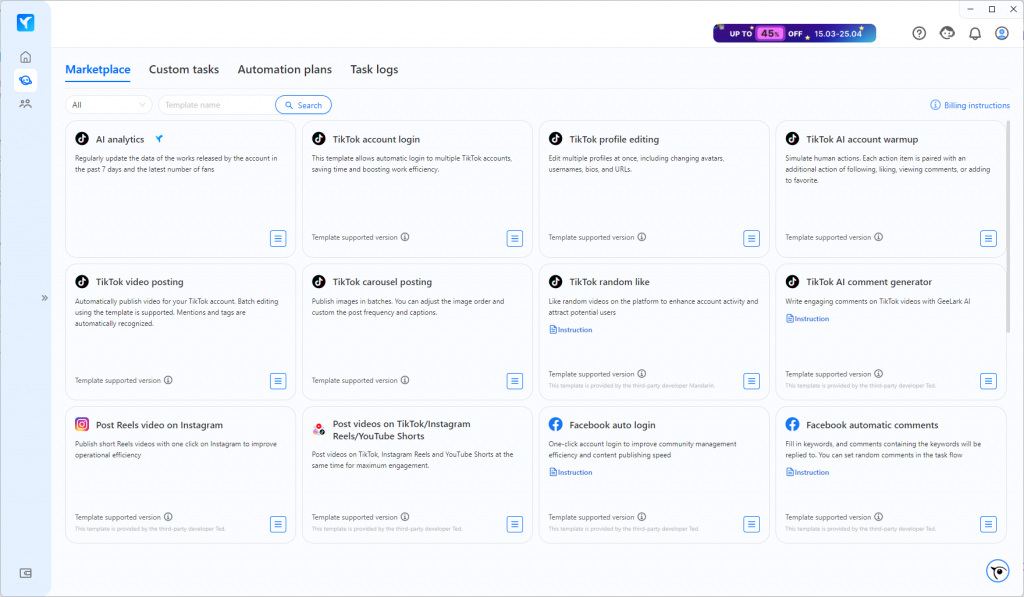
Saving Time!
With GeeLark, you can set up your RPA tasks to run automatically in the cloud, without needing to keep the software open or your devices turned on.
Once you schedule a task, it will execute at the specified time, even if your computer is off or you’re sleeping.
For example, you could schedule social media account management, data scraping, or online shopping activities to run overnight. This way, tedious and repetitive tasks are handled automatically, saving you hours of manual work and allowing you to focus on more important things. It’s a great way to make your automation truly hands-free and boost your productivity without extra effort.
Conclusion
GeeLark makes automation simple and accessible for everyone. You don’t need to know coding — just drag and drop to build your automation workflows.
All tasks run smoothly in the cloud, so you can manage them around the clock without using your local resources. It’s especially great for mobile app automation, helping you create tailored workflows for your apps.
With GeeLark, you can achieve human-like automation even without a mouse. Try it now and see how easy it is to set up your invisible army of bots, using cloud phones and smart scripts to save time and boost productivity.
